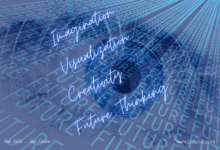
Creating A Happy Work Environment That Makes Employees Happy And More Productive
In the business world, day by day, the pressures of work increase, the difficulties of dealing with the rise, and learning to find a work-life balance. From here, learn how to compensate for this by finding a great and suitable place to work. One of the most important lessons learned by many leading companies is that encouraging and promoting a pleasant and happy work environment that inspires employees to enjoy their work can reap tremendous benefits for companies. Happy employees are loyal employees, leading to them doing their job and doing it well.
The Main reasons why creating a happy work environment is critical to the organizations
1. Happiness is powerful
Happiness is contagious and influential, and when it is reinforced and encouraged to achieve it, it can spread throughout the entire company. Accordingly, employees who are happy with their work are excellent role models for other colleagues and encourage them to enjoy their work.
2. Happy employees are successful.
Employees who enjoy their work are more happy and productive, more comfortable, and more successful. Also it increases self-confidence and inspires employees to achieve better performance and outstanding success, the returns of which will be beneficial to all employees and the company.
3. Happy employees are positive.
Dissatisfied employees have a negative attitude that can permeate their work and inhibit job performance and creativity. On the other hand, happy employees have an incentive and positive attitude to succeed.
4. Reducing stress increases productivity
Tired and stressed employees are distracted employees, which can have a devastating effect on productivity. Consequently eliminating stress, anxiety, and stress can lead to an immediate increase in productivity.
5. A positive work environment encourages initiative.
The action does not always indicate that we are safe. Moreover business is about the suitable risk to get the right rewards. Employees are more likely to take risks, especially those who are happy, while unhappy employees are more likely to go uninitiated or otherwise and not take risks.
6. Happy employees provide positive support.
Positive and fully engaged employees are more willing to support other colleagues. And provide positive support and encouragement for group projects.
7. Happy employees learn from their mistakes.
A happy work environment encourages your team to learn from their mistakes rather than fear them. Mistakes can also be a powerful learning tool that can lead to unexpected success. Employees who fear making mistakes will miss out on essential learning opportunities.
8. Leaders inspire their employees.
Happy business leaders encourage their subordinates to enjoy their work and inspire trust, dedication, and loyalty. For example, leaders who provide positive examples are a critical component to the success of any business.
9. Happiness is an environment for creativity.
Creativity is the lifeblood of any organization, and happy employees are creative employees who will create the solutions your business needs to succeed.
10. People love to work with happy people.
When happiness at work is available, it leads to tremendous benefits by improving relationships between both employees and the employer. They are more willing to work together for the greater good. They will undoubtedly encourage loyalty to the company. And are more inclined to promote the strong team-building vital to your organization’s success.
Creating a pleasant and happy work environment is not easy. The more you try, the more profits you will get.



